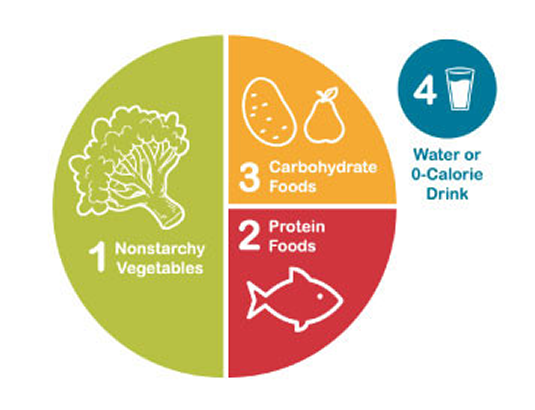Local Diabetes Resources for You and Your Loved Ones
Grinnell, IA – November 5, 2020 – November is National Diabetes Awareness Month. According to the Centers for Disease Control and Prevention (CDC), it is estimated that 1 in 10 people in the United States have diabetes and 1 in 3 people have prediabetes.
What is Diabetes?
The CDC defines diabetes as a disease that occurs when blood sugar is too high. Food consists of three main nutrients that fuel our body: carbohydrates, protein and fat. When we eat, these nutrients– particularly carbohydrates – are broken down into sugar. They move into our bloodstream and arethen called blood sugar. When our blood sugar levels go up after eating, they signal our pancreas to release insulin. Insulin is a hormone that acts like a key to let the blood sugar move into our cells to be used for energy or fuel. In people with diabetes, their body may not be making enough insulin or cannot utilize the insulin it makes as well as it should. When this happens, too much blood sugar stays in the bloodstream and can lead to complications down the road, such as heart disease, vision loss and kidney disease.
What Are the Different Types of Diabetes?
There are four types of diabetes according to the CDC: Type 1, Type 2, Prediabetes and Gestational Diabetes.
Type 1 Diabetes• Makes up 5-10% of total diabetes diagnoses. • Occurs when an autoimmune reaction causes a body to stop making insulin. People with this type need to take insulin every day to survive. • This type is often discovered during in childhood, teenage years or young adulthood.
Type 2 Diabetes• Type 2 diabetes is more common in the United States, making up 90-95% of overall diabetes diagnoses. • Occurs when a body doesn’t use insulin as well as it used to, also known as insulin resistance, and blood sugar levels tend to be higher. • This type often develops over many years and is typically diagnosed when individuals reachadulthood.
Prediabetes• It is estimated that one in three people in the United States have prediabetes, and more than 84% of people may not know they have it. • Occurs when a body is not using insulin as well as it used to and blood sugar levels are elevated, but not high enough to be considered type 2 diabetes.
Gestational Diabetes • Occurs in women who are pregnant and did not have a diagnosis of diabetes when they were not pregnant. • Gestational diabetes often goes away after the baby is born but having it during pregnancy significantly increases the woman’s risk of developing type 2 diabetes later and can also increases the risk of the baby having diabetes later in life.
While family history plays a strong role in whether someone develops diabetes, healthy habits at home may help prevent prediabetes or Type 2 diabetes and may help lower blood sugar numbers for people already diagnosed with diabetes. The coronavirus pandemic has caused many to spend more time at home than usual and has upended many people’s usual routines and daily habits this year.
According to the American Diabetes Association (ADA) the plate method is one way to balance meals for diabetes. Start with a plate that is nine inches across. This will help people to better manage portion sizes.• Fill ¼ of the plate with protein foods, such as chicken, beef, pork, fish, eggs, cheese, beans, tofu or other plant-based meat substitutes. • Fill ¼ of the plate with carbohydrate foods, such as brown rice, whole grain products (bread, pasta, tortillas), starchy vegetables (potatoes, corn, peas, butternut squash), fruit or dairy products (milk, yogurt or milk substitutes)• Fill ½ of the plate with non-starchy vegetables (green beans, carrots, lettuce, spinach, peppers, onions, tomatoes, cucumbers, mushrooms and more.
When people eat combination foods that don’t fit this model as well, identify the different foods involved and think of which category they would fit into. An example from the ADA looks at pizza: to build a pizza using the plate method, choose thin crust to reduce the portion of carbohydrates and top it with lots of vegetables instead of meat (or choose a lean meat). Try to stick to 1 or 2 slices and serve with a side salad or cooked vegetables so that half the meal is non-starchy vegetables.
UnityPoint Health® – Grinnell Regional Medical Center (GRMC) offers several resources for individuals living with diabetes. Visiting with a GRMC dietitian is a great avenue to discuss lifestyle and personal experiences. A GRMC dietitian can offer practical ideas and create a personalized plan that will help individuals meet their health goals.
Consider attending a free, Eating with Diabetes and Pre–Diabetes class at the hospital. This class covers basics about diabetes and eating to help control blood sugars. It is a great opportunity to discuss this topic with a dietitian in a group setting. This class is a good option for people who are newly diagnosed or would like a review of diabetes basics. This class is offered on a monthly basis.Due to COVID-19, we are limiting the class size, checking temperatures upon arrival, and requiring masks and social distancing. To reserve your spot in a class, please call (641) 236-2421.
VUpcoming classes include:• Tuesday, November 17, 2020 from 3:00-5:00 p.m.• Thursday, December 17, 2020 from 4:00-6:00 p.m.• Monday, January 18, 2021 from 5:00-7:00 p.m.





